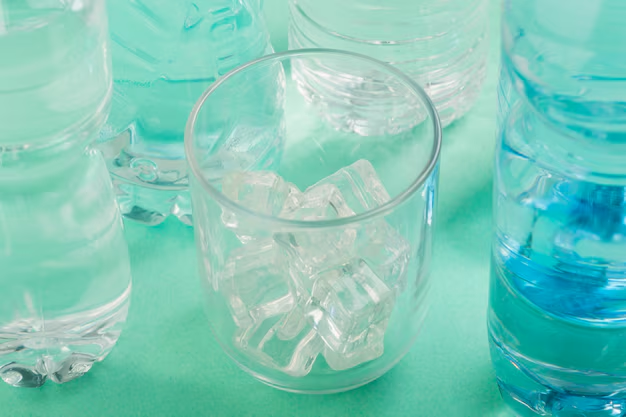How Soon Can You Expect Your Refrigerator to Make Ice?
Picture this: it's a scorching summer day, and there's nothing more refreshing than a cold drink in hand. You head to your refrigerator, anticipating the gentle clink of ice cubes filling your glass. But then it hits you—your freezer seems to be at a standstill, and your ice tray is frustratingly empty. You may wonder, how long should it really take for your refrigerator to make ice? Let’s dive into this topic and uncover insights to help ensure your fridge is performing optimally.
Understanding the Ice-Making Process
The process of ice-making involves several components working together seamlessly. A standard ice maker, typically found in modern refrigerators, utilizes a water supply line, an ice tray, a heating element, and a motorized arm to form and release ice cubes. Once water enters the ice tray, it freezes over a set period. When the cubes are ready, the heating element slightly warms the tray to loosen the ice, prompting the motorized arm to push them into the storage bin.
Average Time to Make Ice
The time it takes for a refrigerator to produce its first batch of ice varies based on several factors. A general range is between 90 minutes to several hours. Variables such as ambient room temperature, freezer settings, initial water temperature, and whether the refrigerator is newly installed or restarting can all influence this timeframe.
Key Factors Influencing Ice Production:
- Freezer Temperature: Ideally, your freezer should be set at 0°F (-18°C). Lower temperatures accelerate ice formation.
- Room Temperature: A cooler ambient temperature aids faster freezing.
- Water Supply: Ensure an adequate and consistent water supply for efficient ice production.
- Ice Maker Size & Model: Some ice makers are designed for rapid ice production, while others operate at a slower pace.
Enhancing Ice Production Efficiency
Understanding how your refrigerator makes ice is only the starting point. Here are practical steps to optimize your ice-making experience:
Optimization Tips:
- Check Temperature Settings: Regularly ensure your freezer maintains optimal temperatures.
- Avoid Overloading: Keep your freezer from being overcrowded, allowing proper airflow.
- Regular Maintenance: Clean or replace the freezer filter to maintain water purity and flow.
- Control Door Access: Limit how frequently you open the freezer door to maintain internal temperatures.
- Consistent Supply: Confirm that your fridge's water supply line is unobstructed.
🍦Quick Tips for Better Ice Making:
- Set the freezer to the coldest setting temporarily to speed up initial ice making.
- Use a surge protector to ensure a consistent power supply and safeguard against electrical faults.
- Inspect door seals regularly to avoid cold air leaks.
Troubleshooting Common Ice-Making Issues
Sometimes, despite your best efforts, your refrigerator's ice maker might not be up to par. Here’s how to troubleshoot common issues:
Common Problems and Solutions
No Ice Production
Solution: Check the water line for blockages or disconnects. Verify the ice maker is switched on.Incomplete Ice Cube Formation
Solution: Investigate water pressure. Low pressure can result in partial ice formation.Slow Ice Production
Solution: Ensure the interior temperature is adequately cold. Adjust settings as needed.Ice with Unpleasant Odor/Flavor
Solution: Regularly clean the ice bin and ice maker. Use baking soda in the refrigerator to neutralize odors.
🔧 Troubleshooting Tips:
- Inspect the Valve: Ensure the water inlet valve is fully open and functioning.
- Test the Thermostat: An incorrect thermostat setting can impede ice production.
- Regularly Clean Components: Ice cubes can retain odors from unclean trays and bins.
Contextual Considerations for New or Recently Resettled Refrigerators
When installing or moving refrigerators, expect some delay in reaching optimal ice production. Let’s explore what to anticipate in these scenarios.
Newly Installed Units
A new installation typically requires up to 24 hours before reaching full ice production. This period allows the appliance to stabilize temperatures and cycle through any residual manufacturing substances.
Restarting After Disruption
After moving or maintenance, the refrigerator may need several hours for the coolant system to balance and efficiently support ice production.
Linking Ice Production to Food Storage & Shelf Life
Beyond its utility for cooling drinks, ice plays a key role in preserving food quality. Here are some ways ice impacts and enhances food storage:
Extending Shelf Life
- Flash Freezing: Ice makers contribute to flash freezing processes, preserving the nutritional quality of foods.
- Maintaining Humidity: A consistent supply of ice helps to control freezer humidity levels.
Enhancing Storage Efficiency
- Compartment Flexibility: Adjustable ice bins create space flexibility for various storage needs.
- Prevention of Freezer Burn: Proper ice formation and storage reduce exposure to air, preventing freezer burn on food.
Maximizing Ice Maker Longevity
Like all appliances, proactive care enhances performance. Let's look at ways to extend the life and functionality of your ice maker:
Maintenance Practices
- Regular Cleaning: Annually or bi-annually clean your ice maker to prevent lime scale buildup.
- Periodic Inspections: Conduct routine checks for leaks, rust, or wear-and-tear in components.
- Professional Servicing: Seek professional servicing if experiencing consistent issues beyond basic troubleshooting.
📅 Routine Maintenance Schedule:
- Check water filters every 6 months.
- Clear storage bin of old ice monthly.
- Inspect for frost buildup and adjust the defrost cycle as needed.
In putting it all together, a fully functional, efficient ice maker adds remarkable convenience and utility to any kitchen. By understanding the nuances of ice production, you can better manage expectations and ensure your refrigerator supports your cooling and food storage needs effectively and reliably—leaving you with more time to enjoy your favorite cold beverages. Cheers! 🥂
